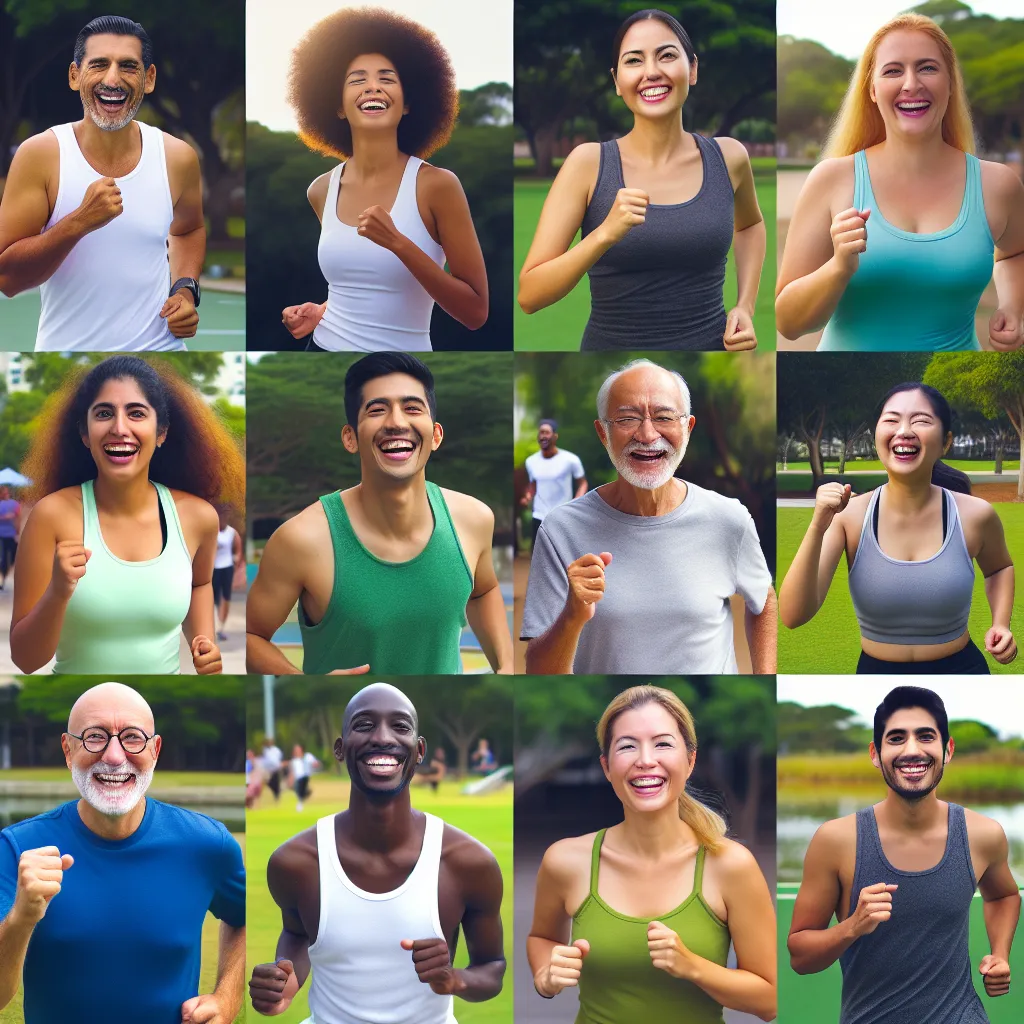Benefits of an Active Lifestyle
Transitioning to an active lifestyle can bring about a multitude of benefits that positively impact your overall well-being. Engaging in regular physical activity helps to improve cardiovascular health, enhance mental clarity, and boost energy levels. Additionally, incorporating exercise into your daily routine can contribute to better weight management, increased muscle strength, and improved flexibility. Active individuals often experience reduced stress levels and improved mood due to the release of endorphins during physical activity. Furthermore, adopting an active lifestyle can lead to a stronger immune system, reduced risk of chronic diseases, and improved longevity. Embracing an active lifestyle is not just about physical fitness, but also about nurturing a holistic sense of wellness.
Creating a Sustainable Exercise Routine
Transitioning to an active lifestyle is a significant step towards improving overall health and well-being. One essential aspect of this transition is creating a sustainable exercise routine. Establishing a consistent and manageable workout plan is key to maintaining long-term fitness goals.
Start by setting realistic exercise goals that align with your current fitness level and schedule. Whether it’s committing to three days of physical activity per week or aiming for a daily workout, having a clear plan will help you stay on track. Consider your preferences and choose activities that you genuinely enjoy, whether it be cycling, swimming, or yoga. Enjoying the exercises you do can make it easier to stick to your routine.
Furthermore, it’s important to gradually increase the intensity and duration of your workouts to avoid burnout and minimize the risk of injury. This could involve adding more reps, increasing weights, or extending the duration of your cardio sessions as your stamina improves. Additionally, incorporating variety into your routine can help prevent monotony and keep you motivated. Mixing up your workouts by including different activities or trying new classes can make exercising more engaging.
Remember that rest and recovery are vital components of any sustainable exercise regimen. It’s essential to allow your body time to recuperate and repair itself between workouts to prevent overexertion. Adequate sleep and proper nutrition are also crucial for supporting an active lifestyle and ensuring your body has the energy it needs to exercise effectively.
By creating a sustainable exercise routine tailored to your individual needs and capabilities, you can pave the way for long-term success in embracing an active lifestyle.
Nutrition Tips for an Active Lifestyle
Transitioning to an active lifestyle involves more than just increasing physical activity – it also requires a focus on proper nutrition to fuel your body for its newfound exertion. Here are some essential nutrition tips for those making the switch to a more active way of life.
First and foremost, hydration is key. Staying well-hydrated is crucial for optimal physical performance, as water is involved in every bodily function. Aim to drink at least 8-10 glasses of water per day, and even more if you’re engaging in intense exercise or live in a hot climate.
Another important aspect of nutrition for an active lifestyle is consuming a balanced diet that includes a variety of fruits, vegetables, lean proteins, and whole grains. These foods provide essential nutrients such as vitamins, minerals, and antioxidants that support overall health and help with muscle recovery and repair.
Carbohydrates are the body’s primary source of energy, making them vital for active individuals. Focus on incorporating complex carbohydrates like whole grain bread, brown rice, and oats into your meals, as they provide a steady release of energy to fuel your workouts.
Furthermore, don’t overlook the significance of protein in your diet. Protein is essential for building and repairing muscle tissue, so be sure to include sources such as chicken, fish, tofu, beans, and lentils in your meals and snacks.
Lastly, don’t forget about the importance of healthy fats. Foods like avocados, nuts, seeds, and olive oil contain heart-healthy fats that provide long-lasting energy and support the absorption of fat-soluble vitamins.
By focusing on proper hydration, a balanced diet rich in fruits, vegetables, lean proteins, and whole grains, and the inclusion of healthy fats, you can effectively support your transition to an active lifestyle and maximize your performance and well-being.
Overcoming Common Barriers to Physical Activity
Transitioning to an active lifestyle is an important step towards improving overall health and well-being. However, many individuals face common barriers that may hinder their efforts to become more physically active. Overcoming these barriers is essential in making a successful transition to an active lifestyle.
One common barrier to physical activity is lack of time. Modern life is often fast-paced and demanding, leaving little room for regular exercise. To overcome this barrier, it’s important to prioritize physical activity by scheduling it into your daily routine. Setting aside dedicated time for exercise, even if it’s just 30 minutes a day, can make a significant difference.
Another common barrier is the perception that exercise is tedious or unpleasant. It’s important to find physical activities that you enjoy, whether it’s dancing, cycling, or swimming. By exploring different options, you can discover activities that are both physically beneficial and enjoyable, making it easier to stick to a consistent exercise routine.
Financial constraints can also be a barrier to physical activity, especially when considering gym memberships or fitness classes. However, there are plenty of budget-friendly exercise options available, such as walking, running, or utilizing free workout videos online. Overcoming this barrier involves getting creative and finding affordable ways to stay active.
Lastly, lack of social support can make it challenging to maintain an active lifestyle. Surrounding yourself with like-minded individuals who prioritize physical activity can provide the motivation and accountability needed to stay on track. Joining exercise groups, team sports, or fitness classes can help overcome the barrier of social support.
By addressing and overcoming these common barriers, individuals can successfully transition to an active lifestyle, reaping the numerous health benefits that come with regular physical activity.

